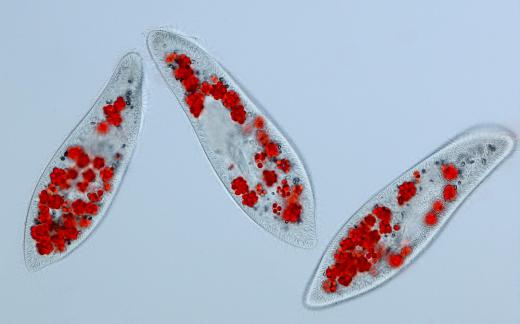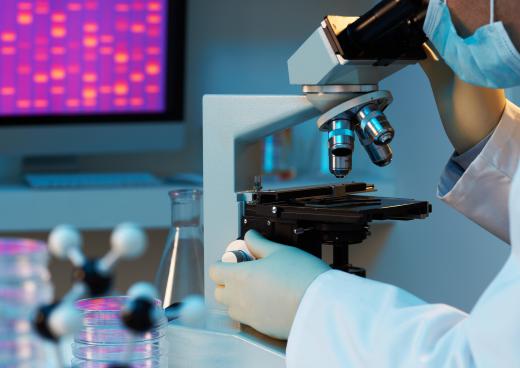What Is a Compound Light Microscope?
A compound light microscope, also known as the bright field microscope, is an instrument commonly used inside the laboratory to view specimens mounted on a glass slide. The compound microscope magnifies the object in the slide in such a way that the smallest structures become visible and clear. With advances in technology, the bright field microscope has broken the limitations of the simple microscope by allowing structures in the slide to be magnified for up to 2,000 times their actual size. Simple microscopes are made up of a single lens and works like a magnifying glass, while the compound light microscope usually uses more lenses.
The compound light microscope has many important parts. An eyepiece is where the individual places his eye to look through the microscope. A light source, usually in the form of an incandescent bulb, is strategically located at the base. There is also a switch found on the side of the base that turns it on and off.

When the switch is turned on, the light shines upward from the base through an opening in the stage, on the area where the slide is placed. A lever located below the stage controls the amount of light to be used. It is important to use just the right amount of light in order to observe and see the specimen clearly.
There are two sets of lenses in a compound light microscope, which allows for a greater magnification of the specimen. The first lens is located at the top, is much nearer to the eye, and magnifies the object ten times its actual size. Another set of lenses are located on the nosepiece. These are collectively known as the objective lenses, which are capable of magnifying the specimen four times, ten times, 40 times, and 100 times its actual size.

When the magnification used is four times actual size, it is called the scanning power objective and is identified through its red stripe. The low power objective has a magnification of ten times and has a yellow stripe. A blue stripe power objective is used to identify the high power objective which can magnify objects up to 40 times. Finally, there's the oil immersion objective which has a 100 times magnification and is identified with its black and white stripes.
Compound light microscopes are mostly used in various areas of science such as forensics, microbiology, genetics, geology, and botany. They can also be found inside the classrooms as essential study tools for students who study science. The compound light microscope is generally an indispensable tool in the practice of medicine, in the continuous search for answers to genetic problems, and in solving crimes.
AS FEATURED ON:
AS FEATURED ON:












Discuss this Article
Post your comments